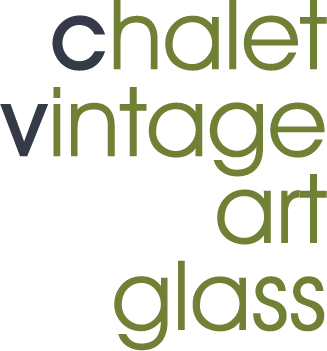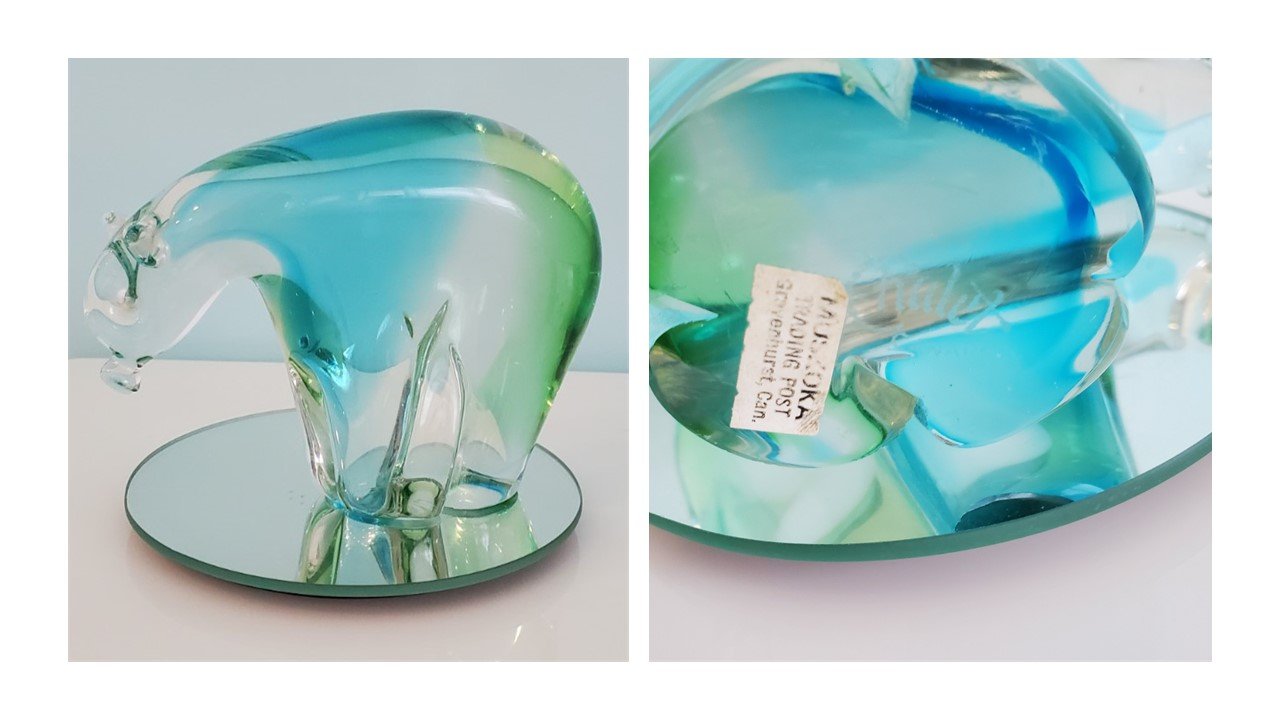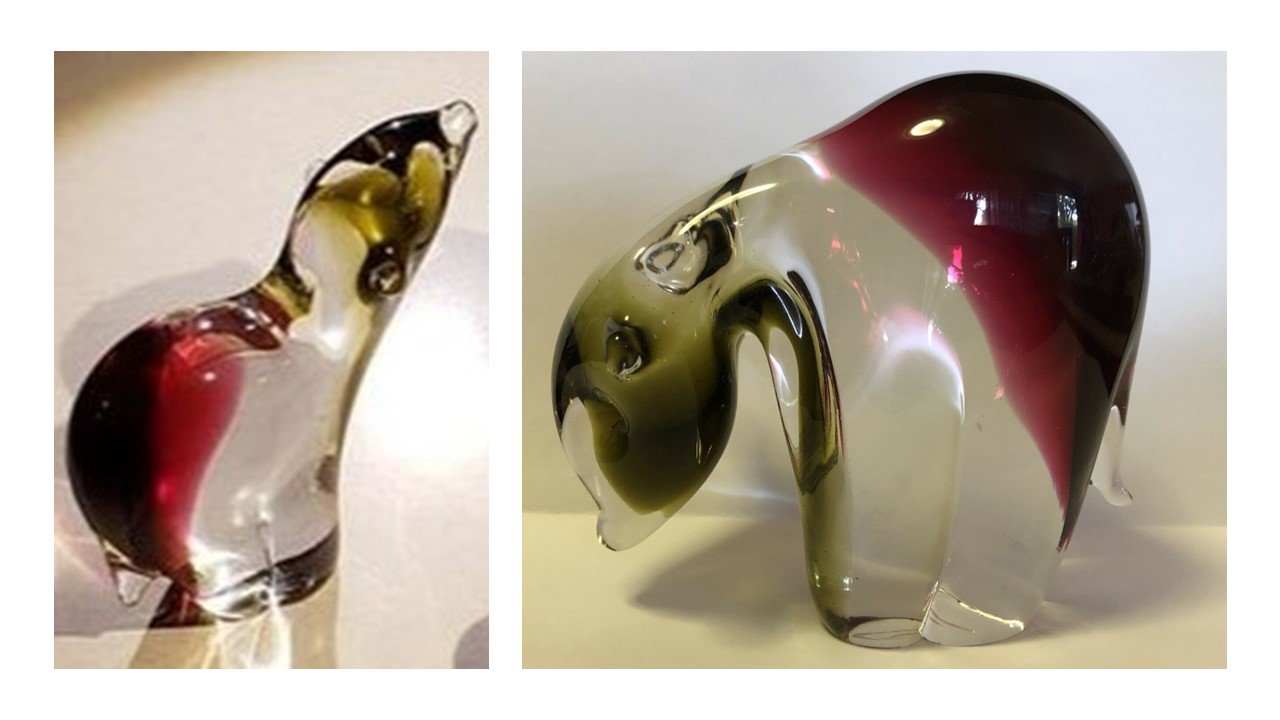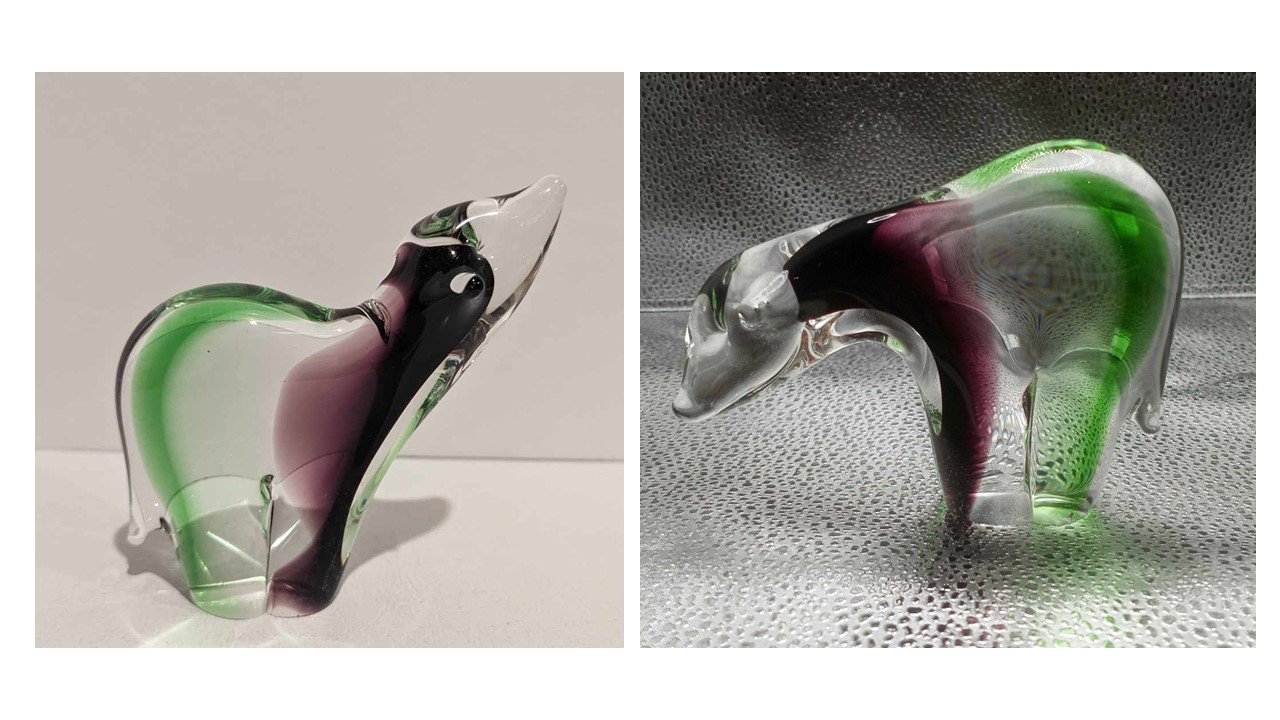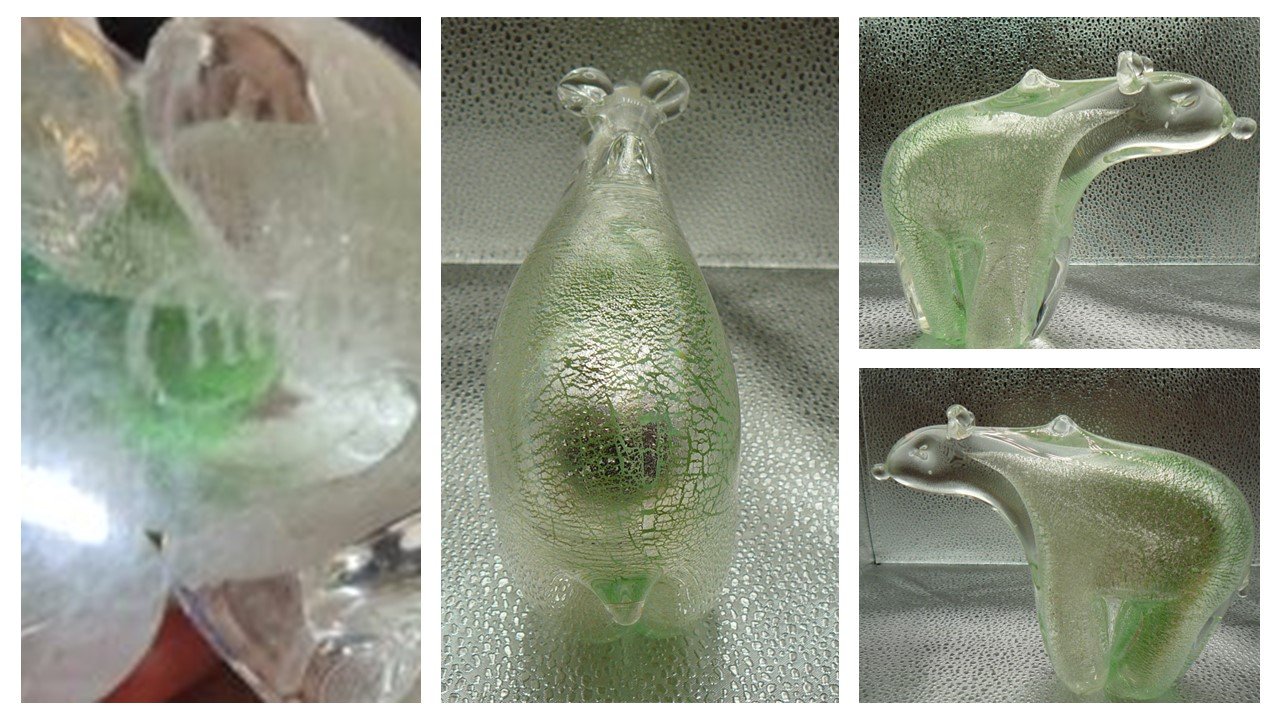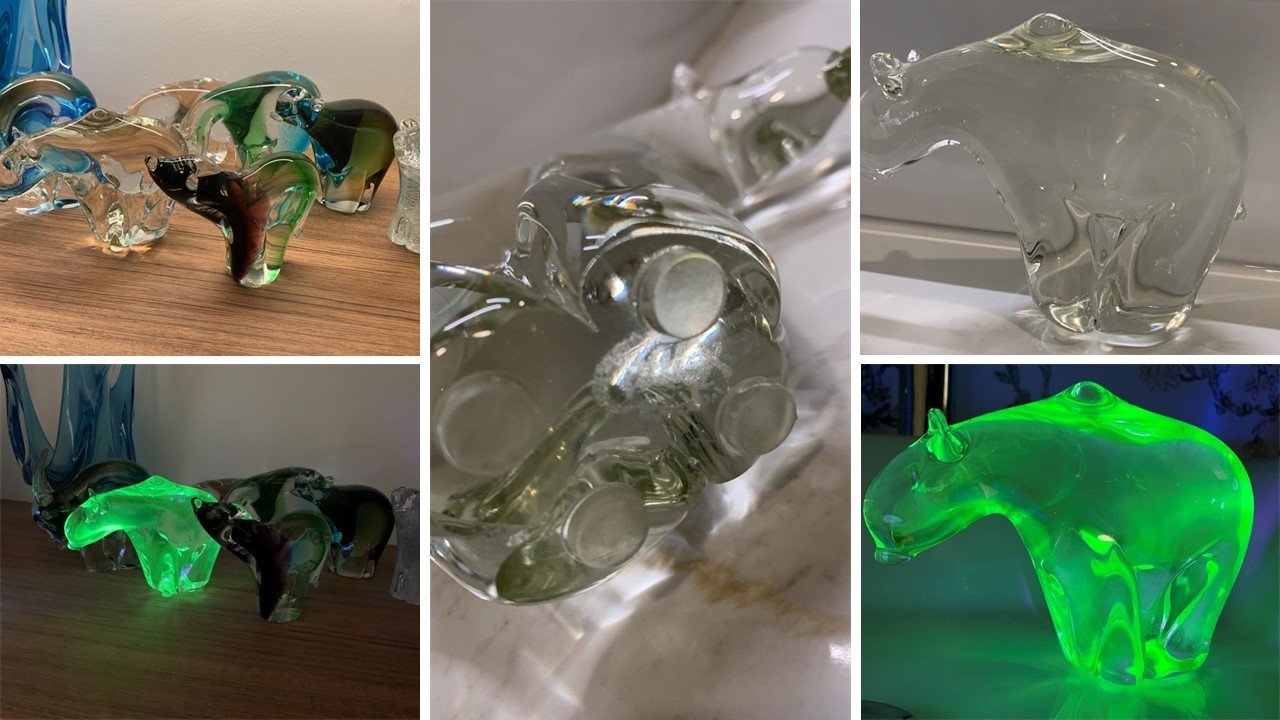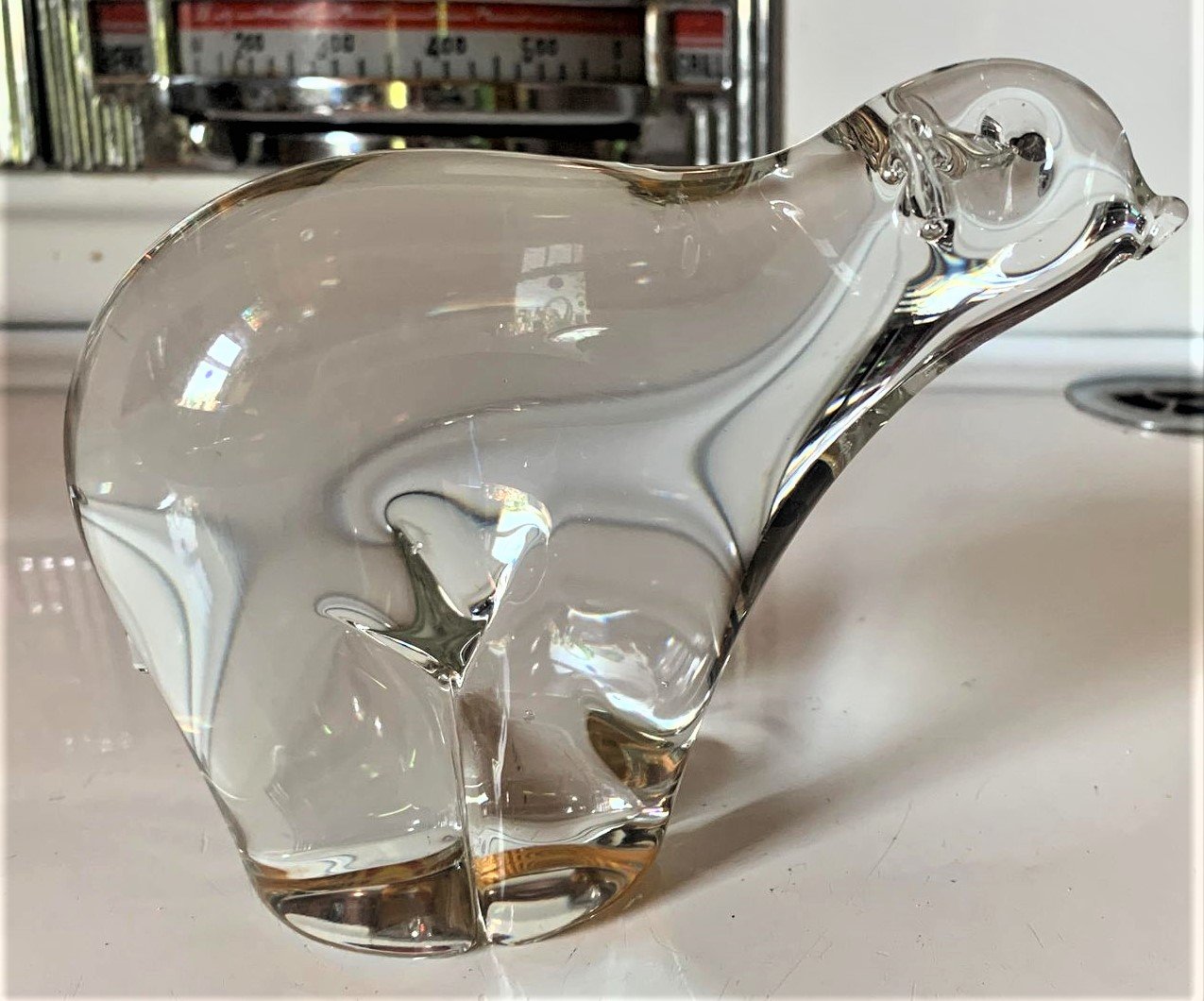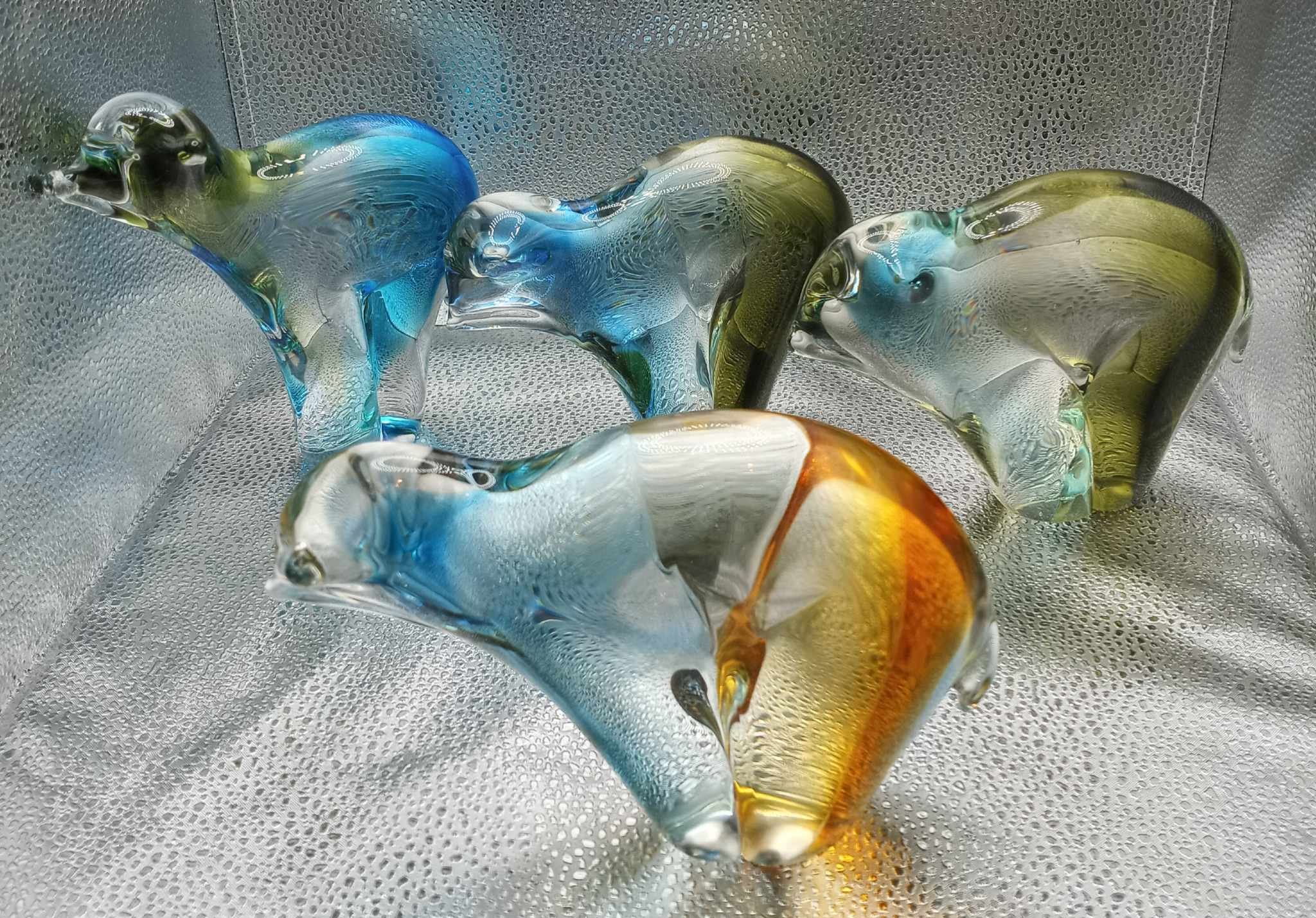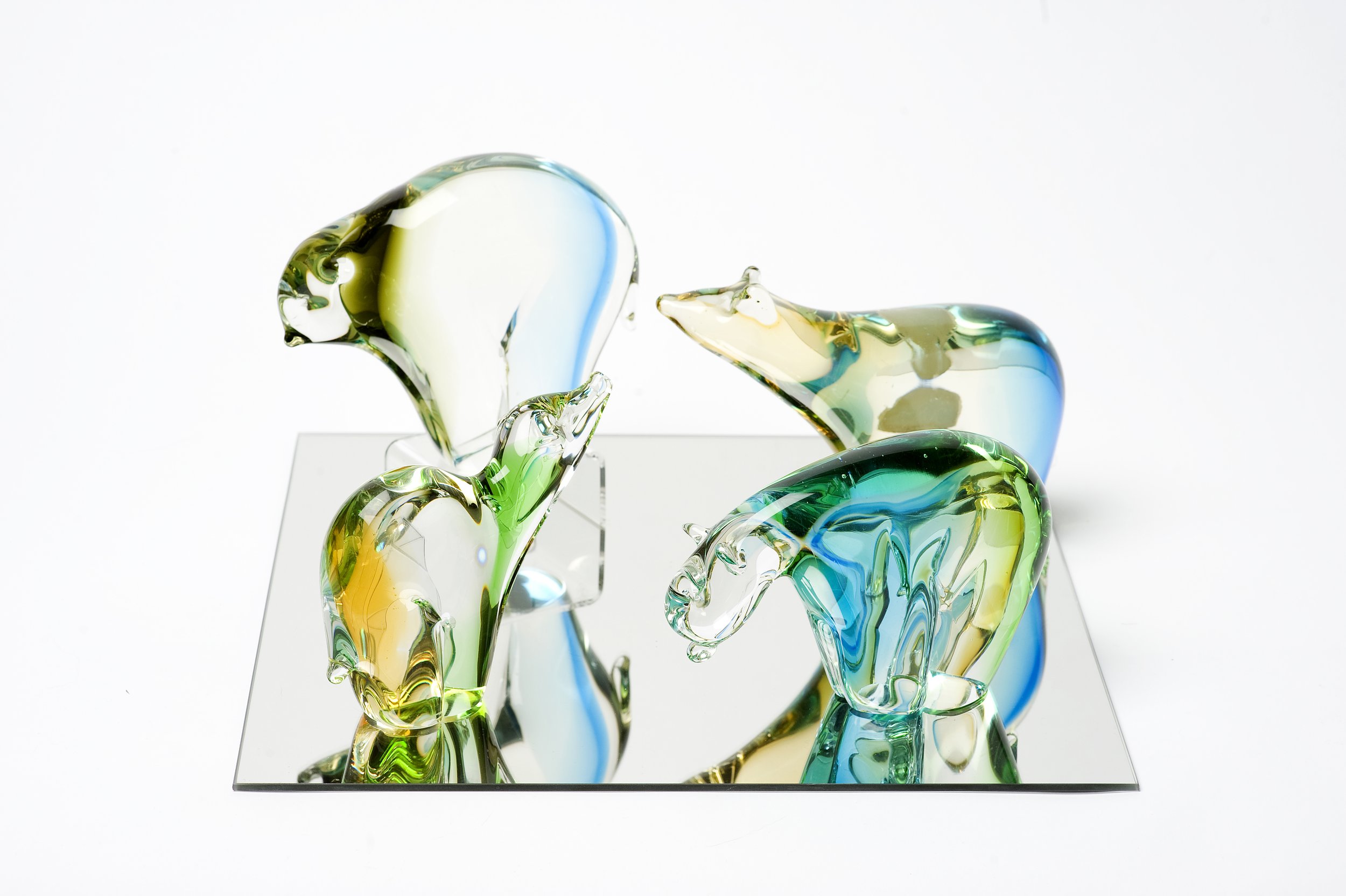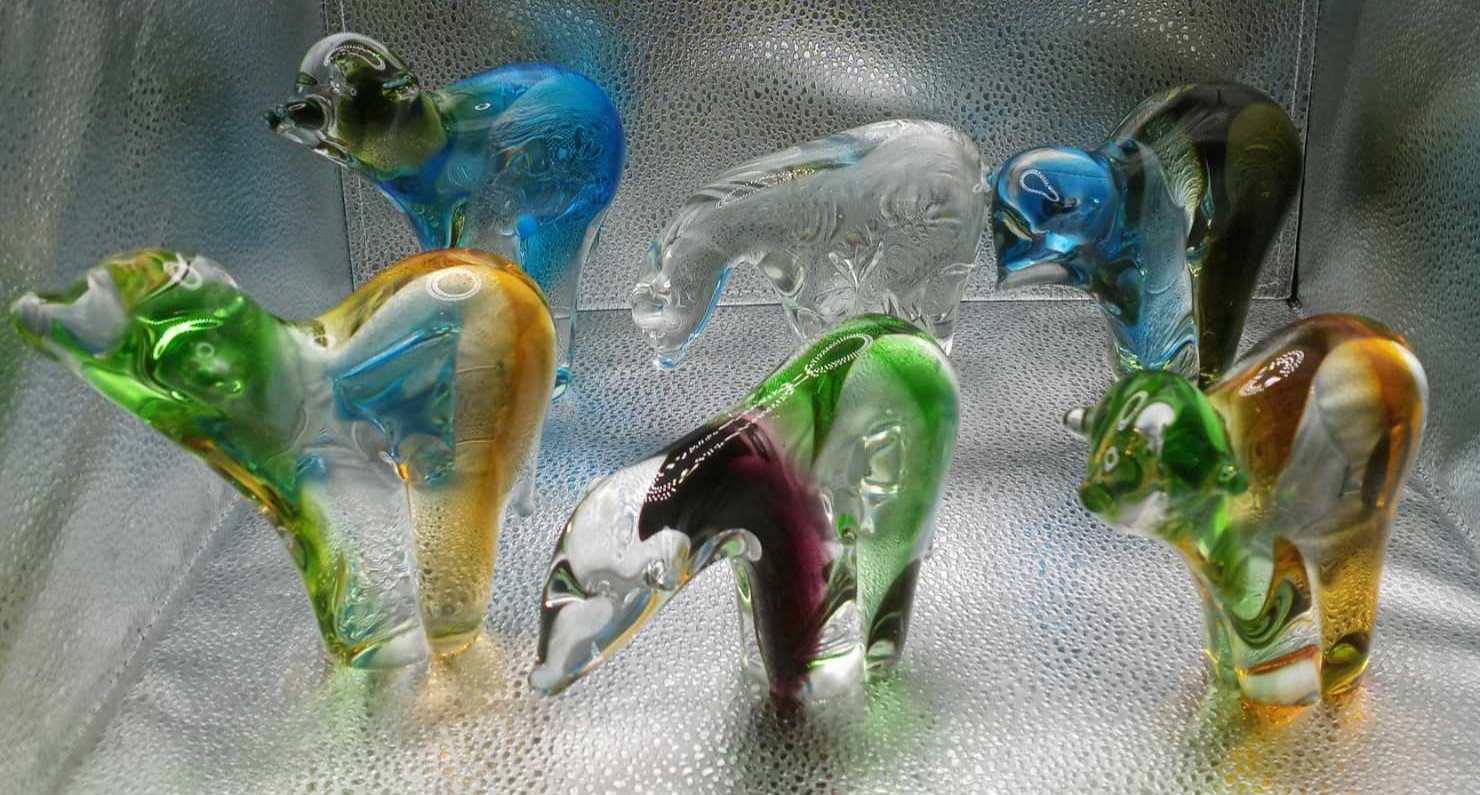The Chalet polar bear figurines
February 27, 2011 was the inaugural International Polar Bear Day. It was established to help spread awareness of the impact of global warming on the bears and their changing habitat, and international conservation efforts. The day coincides with “denning” which is the period in which polar bear moms and their newborn cubs are snuggled together in snow dens across the Arctic. Denning is the most vulnerable time in a polar bear’s life. And in a warming Arctic, where polar bears face ongoing and increasingly enormous challenges, the survival of every single cub is critically important. At present, only 50% of newborn cubs survive and they remain incredibly vulnerable up to age five. As they teeter on extinction, I thought it would be respectful to showcase them and their plight through a “Chalet article” and hopefully raise some awareness of this special day.
The Inuit believed that the polar bear was powerful and mighty and thought that he was "almost man." It is a symbol of the resilience, patience and determination that is needed to survive in this harsh climate. In the realm of spirit animals, the bear represents strength, courage, confidence, and leadership. If you are a leader with others dependent upon you, the bear is also a reminder of the importance of self care.
Polar bears are greatly respected by Inuit hunters as the most intelligent animal in the Arctic and they worship the great bear because they believe that he decides whether or not a hunt will be successful. “Nanuk” is one of the names used by the Inuit and it means “Animal Worthy of Great Respect.” Also used is “ Pihoqahiak” which means “The Ever-Wandering One.” There were many European names for the polar bear such as the “Ice Bear”, the “Sea Bear” and the “White Bear.’
Chalet was obviously aware of the cultural significance and the ongoing importance of the polar bear in Canada’s past and present. It was one of the animals chosen for the “Canadiana Wildlife” hang tag.
There are two different styles of Chalet polar bear. Inventory #605 is the “head up” pose and inventory #621 is the “head down” pose.
“Head down’ #621 in foreground. “Head up” #605 at back.
The Chalet catalogue page showing the two polar bear styles – fourth row at right. Courtesy of 50 Shades member Paul Winsor.
As with all Chalet forms, there is variation from piece to piece. Different tones of the same colour as well as differing colour placement is very typical. In form, the angle of the head in both poses is never quite the same. Sometimes, in style #605, the head is straighter out and less tilted upward and sometimes the head of bear #621 has a much more exaggerated droop. In both styles, the curve of the back differs from bear to bear. Noses of some are rounder and less pointed than those of others. The length of neck and elongation of the head also varies.
These 2-toned figurines perfectly illustrate several variations. They do both use green but of different shades. More significantly, note the differences in colour placement. The olive and blue bear from the collection of 50 Shades member Kay Bee has no colour in the head and much more throughout the body. While the pose is “heads up” in both, the thickness of the neck, the shape of ears and nose and the body taper to the base is very different.
These two are excellent examples of differing tones within the same colour combination as well as also illustrating very different shaped heads and noses. On addition, obvious are the differences in the dip and curve of the back and rump.
Same colour combination and pose but very differing tones and placement is seen once more. The differences in form are also striking. Thanks again to Kay Bee (left bear) while the bear on the right is from the collection of 50 Shades member Pierre Denis.
Another excellent example of variations within the same pose and colour combination framework.
Chalet polar bears have been found with a variety of markings. The 2-tone figurines are typically etched with the “Chalet Canada” signature but have been found with the small gold “Chalet lead Crystal” sticker as well as the N. C. Cameron and Sons Ltd. Label. Clear crystal bears etched “Chalet Canada” have been found and they were also carried by Riekes Crisa in the United States. To date, we have found none with the Chantili etching or sticker.
Polar bear at top right which retains its original N. C. Cameron and Sons Ltd. sticker is from the collection of 50 Shader Wallace Addison White.
As above, they were also distributed by Riekes Crisa in the United States in clear crystal. Although not shown in either of the two catalogs that I have, I have, however, found two American retailers that featured the “head up” style of polar bear in their advertising:
Still operating today, Boscov's Inc. is a family-owned department store with fifty locations in Pennsylvania, New York, New Jersey, Delaware Maryland, Ohio, Connecticut, West Virginia and Rhode Island.
A lovely pair from the collection of 50 Shader Ken Brewer is shown beautifully in the following video short:
We have been lucky enough to find one retaining its original retail sticker!
This Canadian store, Muskoka Lodge, is located in Northern Ontario and is still in operation. He now hunts from the collection of 50 Shades member Dwain Robertson.
And one retaining a distributor’s sticker:
This label has also been found on other pieces of Chalet glass.
The Chalet polar bears were done in a wide variety of colours. The most common is the blue/emerald-green 2-tone colour combination.
Blue/amber, amber/emerald/green, blue/olive and yellow/green 2-tones are very frequently seen in most Chalet animals but not so commonly used it seems in the bears. I have found a few of them but their numbers are insignificant when compared to the number of bright blues and bright greens polar bears I have on file.
Amber/blue bear at top right from the collection of 50 Shades self-described polar bear hunter Jonathon Tremblay. And Pierre Denis’s bear (bottom right) has once again emerged from hibernation
50 Shades member Bob Burgess is well protected by his spirit bears.
We have also found rarer cranberry/emerald-green, orange/green, cranberry/olive green and purple/green 2-tones.
The cranberry/olive green 2-tone has been found in both poses.
Bear at right from the extensive polar bear collection of 50 Shades member Pina Pina.
Rare coloured 2-tone.
Even more unusual, a very few orange and clear.
This extremely rare figurine from the collection of 50 Shades member Ken Brewer.
As stated earlier, pose colour placement was not an exact science and shades of the same colour had a range. However, this pair is the exception to the variation rule:
These brothers, from the collection of Jonathon Tremblay, show amazing symmetry in form, in shape and size, and in colour and colour placement. This indicates they would likely have been made by the same artist at the same time. Chalet Maestro Bruno Panizzon worked a lot with the animals and said that they were more difficult to blow than the larger free-form stretch pieces.
The bear below was made with the same colour combination and in the same pose as the ones directly above. However, its colour placement and shape of form is very different. Typical variation from artist to artist aptly illustrated by its example.
From the collection of 50 Shades member Matthew LeDrew who, at present, has 17 bears in his collection.
Chalet polar bear figurines were also done in clear crystal, opaline and metallics. To date, unlike the fish, cat, whale and elephant figurines, there have been no solid-coloured polar bears found.
Clear crystal:
Photographs on right courtesy of 50 Shades member Michael Flink.
These four clear crystal bears are also from the collection of Matthew LeDrew.
To produce the opaline animal figurines and larger pieces, lead arsenate was added to the clear crystal molten glass mixture in the vat to create a milky, white appearance. The clear glass loses its transparency and becomes opaque. Opaline glass was used not only in two complete and distinctive hand moulded Chalet lines but also to create some very memorable stand-alone animal figurines. As well as opaline polar bears, we have also seen elephants, roosters, and cats.
I am fortunate to have this exceedingly rare piece in my collection. It is very hard to capture the etched “Chalet Canada” signature on this type of glass but using a UV light proved to be the answer!
Although, to date, we have found no Chalet bullicante polar bear figurines, this artic animal certainly is perfect for silver foil. Like many of the rarer Chalet animal figurines, the polar were produced with silver inclusions. In Chalet silver foil figurines, small ultra-thin sheets of these metals were used. These silver sheets were made by the precious metal having been beaten into an extremely thin leaf-like state of about 0.15 micron in width. To give you an idea of such a thin surface, this reflects about 20 grams of the precious metal covering six square meters. The sheets were then cut into small squares of about 8 cm. To infuse this silver into the form, the Maestro started by rolling these small .925 silver sheets onto the hot glass mass during the early stage of blowing the figurine. Once the silver foil covered most of the gather, he then added a layer of clear crystal. Next, when he began to blow into his canna, the metal sheet within the layers broke into smaller pieces which dispersed throughout the piece. This resulted into objects having scattered metallic pieces if differing sizes and shapes captured inside the form producing shimmering effects. These may appear close to the surface or submerged within deeper layers of clear crystal. There is no uniformity from piece to piece as you will see below. Both gold avventurina (gold dust inclusions) and silver foil are seen in some Chalet animals – namely elephant, polar bear, bird, owl, cat and fish figurines.
To date, silver foil flecks are the overwhelmingly most typical metallics found in the Chalet polar bears. The placement and intensity of the silver flakes varies from piece to piece resulting in very distinctive and diverse patterns The silver foil bears can be either clear or coloured and typically in various shades of blue or green. There has been one found in silver over the purple as well. Usual marking is the iconic Chalet etched signature.
Some have a small raised “hump” on their back near the head. These are seen in both colours of bear.
50 Shaders love their polar bears! Bear on left from the collection of Pina Pina and bear at right from the collection of Matthew LeDrew.
Two very different colours of silver foil bear have been found - a bright green silver foil bear and an olive green.
This amazing figurine from the collection of Pina Pina
The shades of blue and the density and shape of the silver foil flakes also vary:
Bears in the two larger photographs are, once again, from the collection of Matthew LeDrew. Bear at top left belongs to Deborah Patterson.
The rarest silver foil bear is the silver in clear crystal
Photograph courtesy of 50 Shades member Candace Crosswhite Nestorowich.
Exceedingly rare as well.
Just a “beary, beary” cool piece!
And such a surprise! Chalet also made at least 1 gold avventurina polar bear.
This is the only gold-filled Chalet “Ursus maritimus” figurine that we have seen. This jaw dropper from the collection of Matthew LeDrew.
Uranium oxide, when suitably prepared, produces colours of great vividness. Discovered by a German chemist in 1789, it was first used by artisans as a colorant in pottery glazes, enamels, and glass in the 1830’s. Since uranium can withstand extremely elevated temperatures and produces colours of vivid brilliance, its usage was widespread. The bright red-orange finish of Fiestaware ceramics and the yellow-green glow of Vaseline Glass springs to mind most often. However, uranium was also used in jewelry, paperweights, buttons, everyday tableware and drinking glasses, painted porcelains, candleholders, lamps, stained glass, and art glass.
Commercial usage in Canada of uranium was off and on again up to 1968 - availability was determined most often by catastrophic world events. Chalet Artistic Glass was registered with the American government’s Nuclear Materials Management and Safeguards System because of the company’s use of depleted uranium in some of its glass. However, the Chalet artists were unaware that Maestro Sergio Pagnin (a Chalet founder, owner and the company chemist) employed this element in both large and small Chalet pieces until they attended the 2010 Chalet exhibit in Cornwall.
That these amazingly clear polar bears contain uranium certainly was a surprise to me!
This clear crystal polar bear has virtually no yellow tinge – only the very slightest trace in the back hump but does it glow! This “take me to your leader” piece prowls the collection of 50 Shades member Jackie Lyn.
Another!
It really could not be more “crystal clear.” This more typically styled polar bear figurine from the collection of 50 Shades member Ken Brewer.
After seeing how pure the crystal in these figurines presents, I got my UV light out and checked all my clear glass – alas, none contained uranium but definitely worth checking and keeping in mind for possible future discoveries. EDAG also produced pieces which contain uranium. To date, we have found no evidence that Lorraine Glass Industries produced pieces with uranium.
Lorraine Glass Industries, EDAG, Mosaic Artistic Glass, and Altaglass also produced polar bear figurines.
Lorraine bears:
Like Chalet, Lorraine bears were produced in 2-tones. To date, we have seen no clear crystal or bullicante Lorraine figurines. Lorraine polar bears appear to have been made in both the “heads up” pose and the “heads down” position.
This pair, from the collection of 50 Shades member Pina Pina, not only shows different head positions, it also shows different colour placement and variations in shape.
This grouping of four Lorraine Glass Industries polar bears once again from the collection of Pina Pina.
Groupings of Lorraine Glass and Chalet polar bear figurines
Chalet made bears in foreground and Lorraine bears in background.
Chalet made bears in foreground clear crystal bear in middle background. Lorraine blue/green bears in background flanking clear crystal Chalet figurine. From the collection of Pina Pina.
EDAG figurines:
Mosaic Artistic Glass polar bears:
Very similar in size to the bears from Lorraine Glass Industries.
Altaglass did many different bears – not only the polar bear. Altaglass polar bears can be stickered, engraved or impressed. They can be on a pedestal or not. Coloured or clear glass. Bullicante or not.
Polar bear in middle from the collection of 50 Shades member Darlene Spence.
Another bear from the collection of Matthew LeDrew.
The Norm Williams for Altaglass bear on the left is from the collection of 50 Shades member Adam Marshall.
Canadian glass artist Maestro Daniel Vargas is well known for his series of “Northern Lights” polar bears.
This particular Vargas figurine resides with 50 Shades members Kevin Kodak and Tracey Shanley.
Many FM Ronneby Konstglas animal figurines, like the clear “Buddha belly” owls closely resemble Chalet figurines. However, in the case of the Ronneby polar bears, the closest in shape to Chalet’s is bullicante so that negates any identification confusion.
Ronneby polar bear.
“Without us, there is no them. Make a difference!”
You know the nature show warning, “Content includes animal predation that may upset sensitive viewers and animal lovers…” Well, maybe now is the time to change the channel. Just a warning that, “ A bear’s gonna do what a bear has to do.” Thanks to 50 Shades member Josh Dolstra for putting together this “Chalet hunting scene.” Glass nerds!
